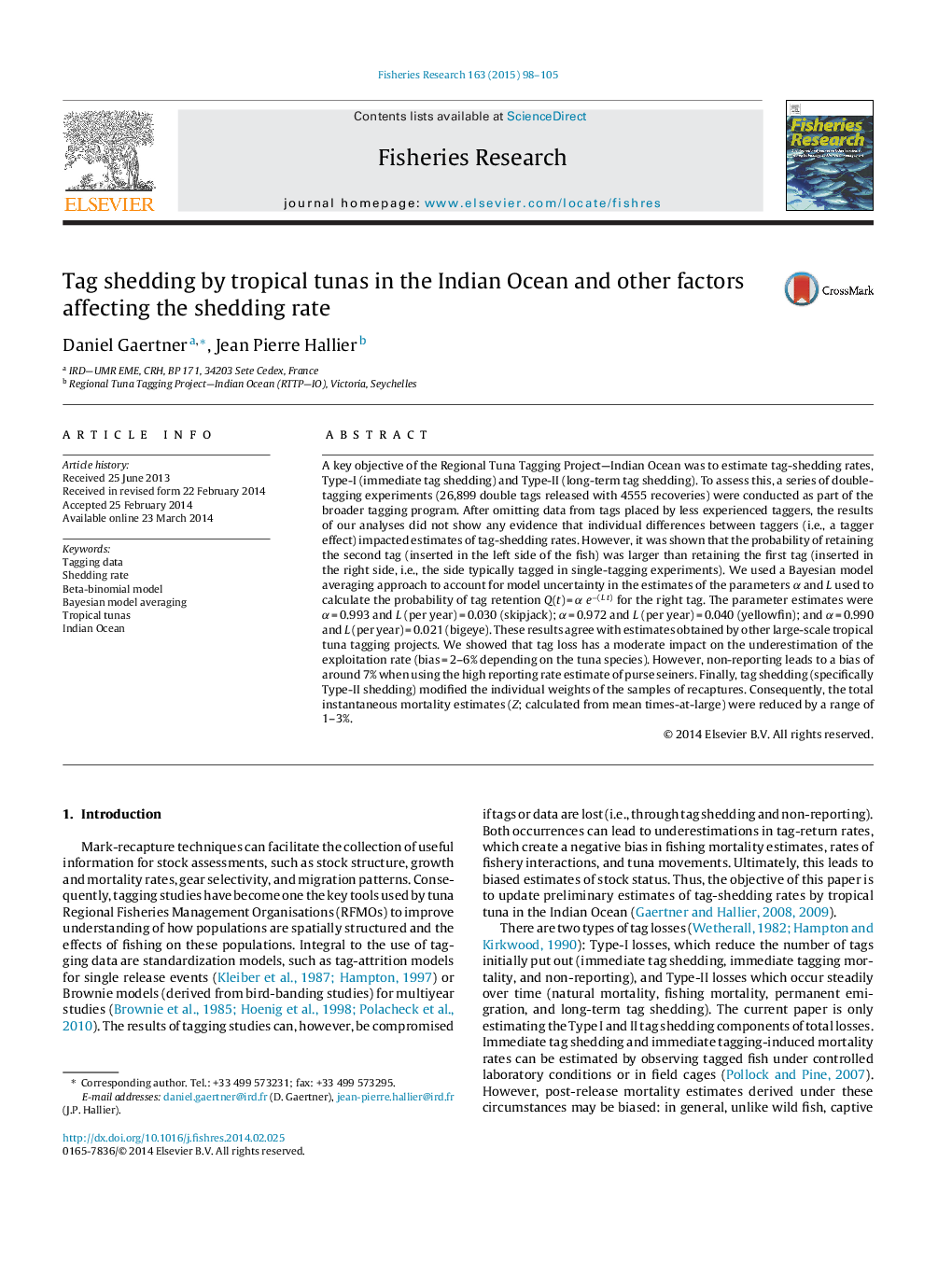| کد مقاله | کد نشریه | سال انتشار | مقاله انگلیسی | نسخه تمام متن |
|---|---|---|---|---|
| 4542932 | 1626805 | 2015 | 8 صفحه PDF | دانلود رایگان |
• Estimate tag-shedding rates from double-tagging experiments.
• Experience of taggers did not affect shedding rate estimates.
• Constant-rate shedding model provided a better fit than the time-varying shedding rate model.
• Difference in retention rate between the first and the second tag.
• Exploitation rate was more biased by non-reporting than by shedding, but total mortality based on time-at-large was most impacted by continuous tag loss.
A key objective of the Regional Tuna Tagging Project—Indian Ocean was to estimate tag-shedding rates, Type-I (immediate tag shedding) and Type-II (long-term tag shedding). To assess this, a series of double-tagging experiments (26,899 double tags released with 4555 recoveries) were conducted as part of the broader tagging program. After omitting data from tags placed by less experienced taggers, the results of our analyses did not show any evidence that individual differences between taggers (i.e., a tagger effect) impacted estimates of tag-shedding rates. However, it was shown that the probability of retaining the second tag (inserted in the left side of the fish) was larger than retaining the first tag (inserted in the right side, i.e., the side typically tagged in single-tagging experiments). We used a Bayesian model averaging approach to account for model uncertainty in the estimates of the parameters α and L used to calculate the probability of tag retention Q(t) = α e−(L t) for the right tag. The parameter estimates were α = 0.993 and L (per year) = 0.030 (skipjack); α = 0.972 and L (per year) = 0.040 (yellowfin); and α = 0.990 and L (per year) = 0.021 (bigeye). These results agree with estimates obtained by other large-scale tropical tuna tagging projects. We showed that tag loss has a moderate impact on the underestimation of the exploitation rate (bias = 2–6% depending on the tuna species). However, non-reporting leads to a bias of around 7% when using the high reporting rate estimate of purse seiners. Finally, tag shedding (specifically Type-II shedding) modified the individual weights of the samples of recaptures. Consequently, the total instantaneous mortality estimates (Z; calculated from mean times-at-large) were reduced by a range of 1–3%.
Journal: Fisheries Research - Volume 163, March 2015, Pages 98–105
